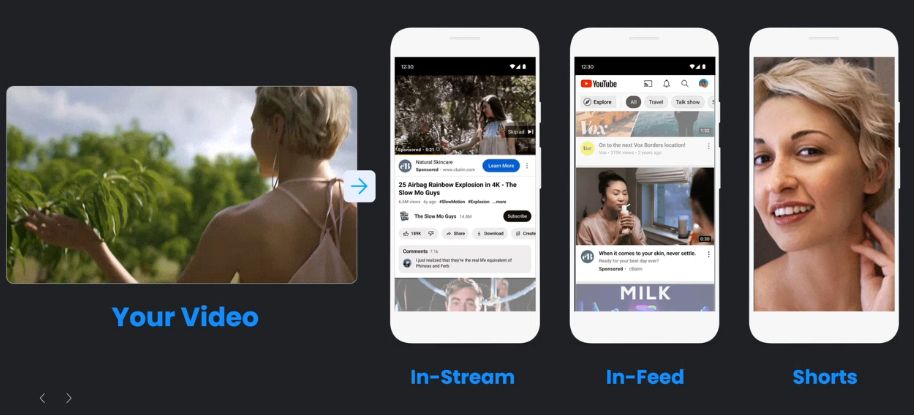3 Crucial YouTube Formats Advertisers Need in 2025
Without a clear understanding of these 3 YouTube formats and how they work, your brand could miss out on major opportunities.
For context, you need to know the YouTube era we’re currently in so you can see how important this is. Here’s a quick timeline to help:
2006: Google acquires YouTube
2010: TrueView skippable ads launch
2016: Bumper ads come into play (6sec & non-skippable)
But within the last 5 years, we’ve seen significant changes to YouTube’s expansion:
2019: Ads on Google TV and TV screens are enabled
2020: YouTube Shorts launch
2021: In-feed ads launch (formerly Discovery Ads)
2024: Multi-format ads and Creative Partnerships
We also have to look at the YouTube’s current ecosystem:
- The Viewer
The Viewer is most important. We’ve seen Viewers behavior shift from TV to YouTube, and now from YouTube back to the TV screen (I’ll show you why later). - The Creator
Viewers grow primarily because of creators. As individuals we can create content and not be reliant on huge production teams and corporations. - The Advertiser
The reason you're reading this right now is because of the advertiser. We all work for different advertisers (our brands) and sometimes an advertiser can be a creator. But advertisers now can reach the viewer either through the creator or with really good content on a platform where people are watching videos.
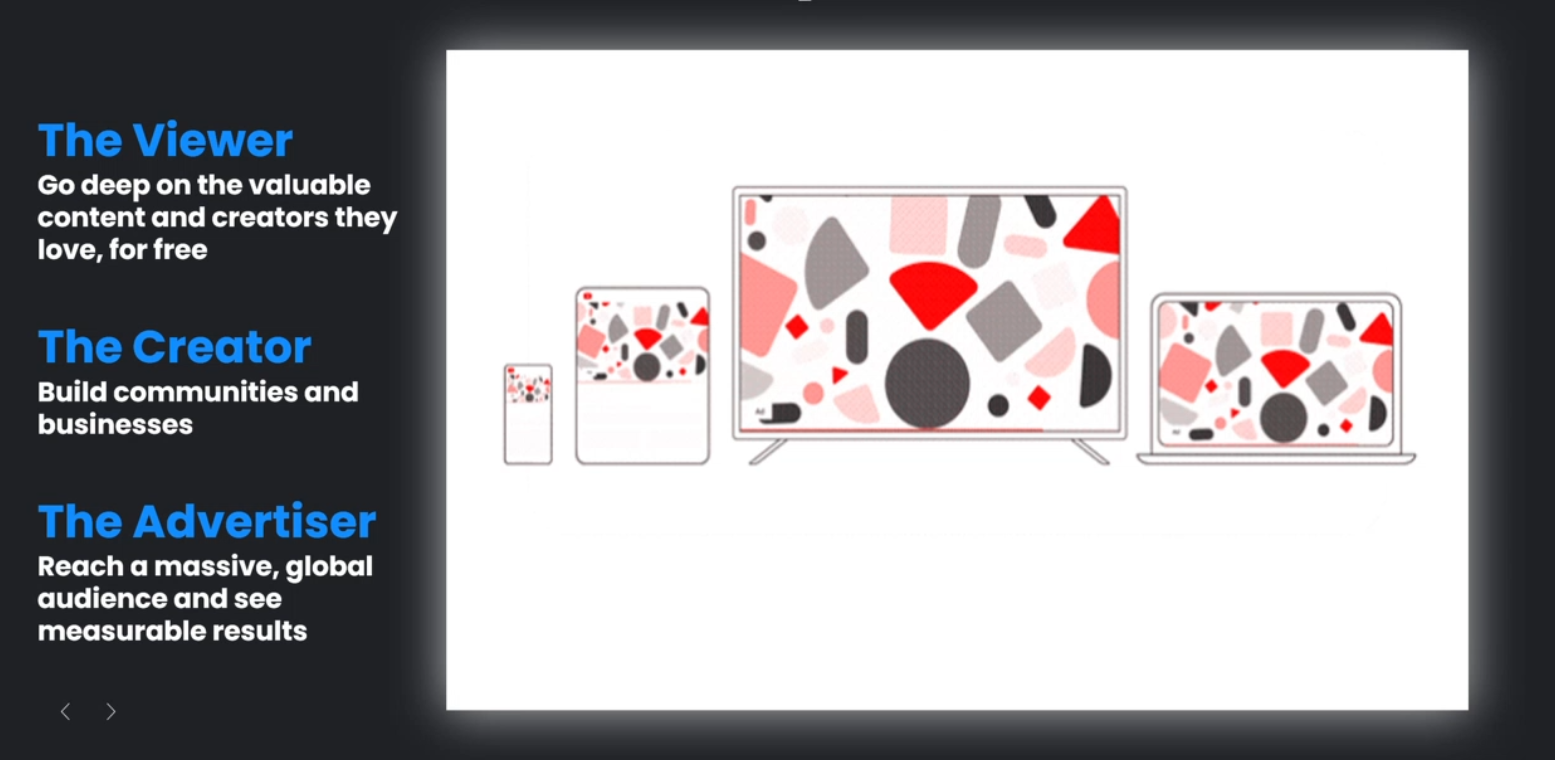
YouTube is still a very new game and many advertisers are scared to play it, strategize inside of it, and put money towards it. But no need to worry, I’m going to guide you through the 3 YouTube placements you need to effectively entertain, educate, and inspire your audience in 2025.
Let’s dive in.
In-Stream
I want you to understand one thing when it comes to TV: people are still spending time on YouTube - but the placement is shifting. Over time we’ve seen Viewers move from TV screens to desktop YouTube. But now we can put YouTube on our TV through streaming. People want to be entertained and TV is one of the best routes to take.
According to E-Marketer, we see 63% more people using YouTube on the TV screen than they are on their phones. And that has only happened over the last five years.
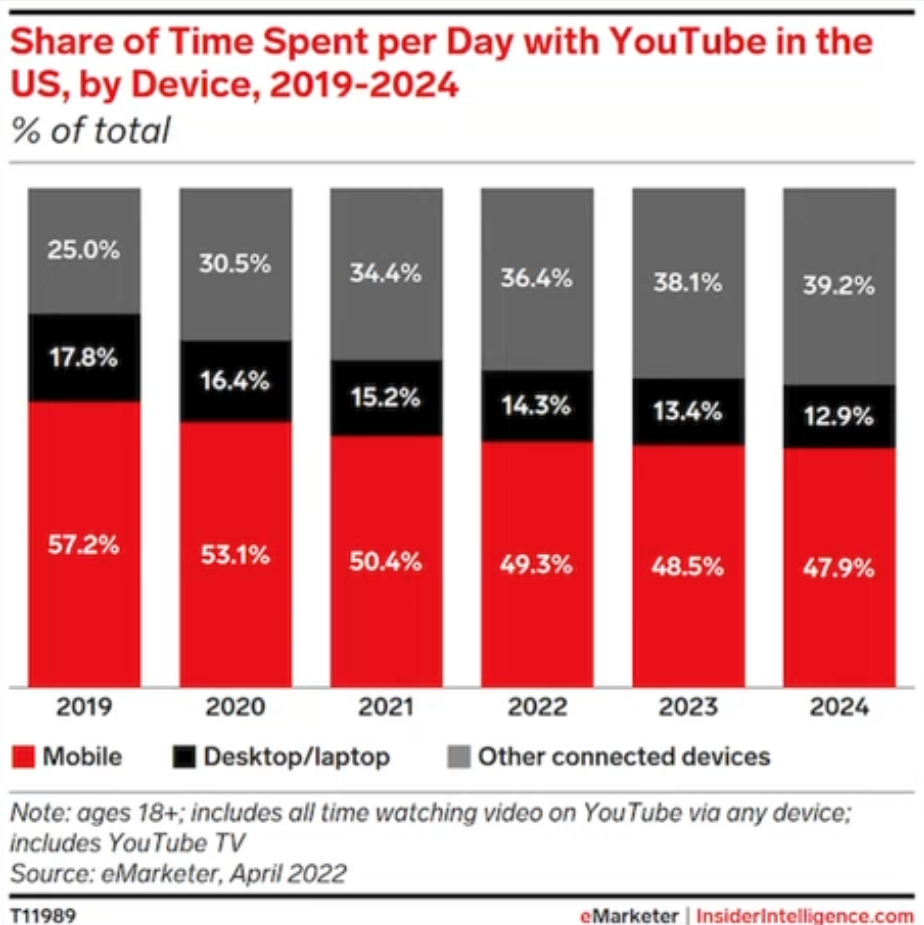
That’s the power of the shift in TV.
We also see traditional tv usage decrease by 40 million households in the last 10 years. Millions of households that had traditional TVs now have a connected TV. Meaning, that when you have Google and YouTube as an app on your TV or device, you can easily stream any sort of content from the app to your TV.
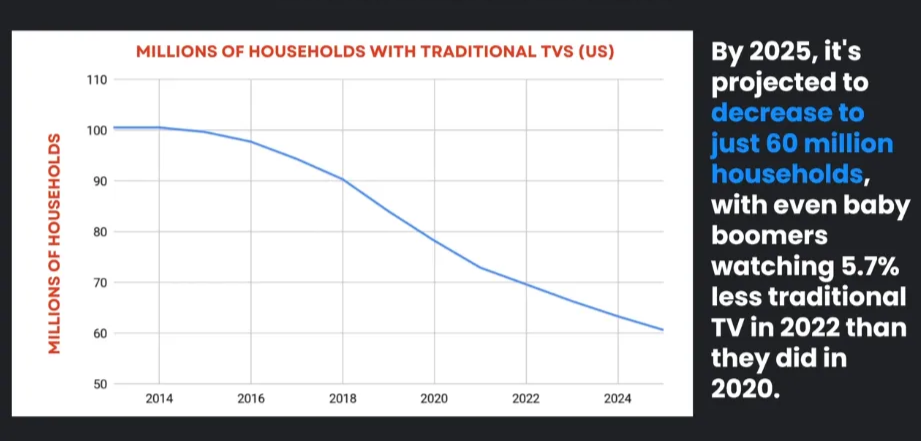
This begs the question, “Why would I ever run on CTV provider when I can just run on Google TV? The reason Google is the answer is because now you can exclude the video partners and reach people in the same placement but also have the targeting capability and the data backing. You also can segment only to TV screens, and not be reliant on multiple devices. And the best part is, it's inclusive with all other campaigns that are running within Google.
This is the opportunity.
It’s also the advantage for many brands to jump on the fact that you can target this, at scale, very easily.
In-Stream = Education
Where? TV.
In-Feed
In-feed ads are your chance to bring somebody into your brand.
And it’s because of human behavior. Inside a feed format, users are scrolling, looking to be distracted, and waiting for something to catch their attention. They are looking to be inspired.
In-feed currently runs in 3 places:
- Home feed
- Watch Next feed
- Search feed
All these placements create a different user behavior.
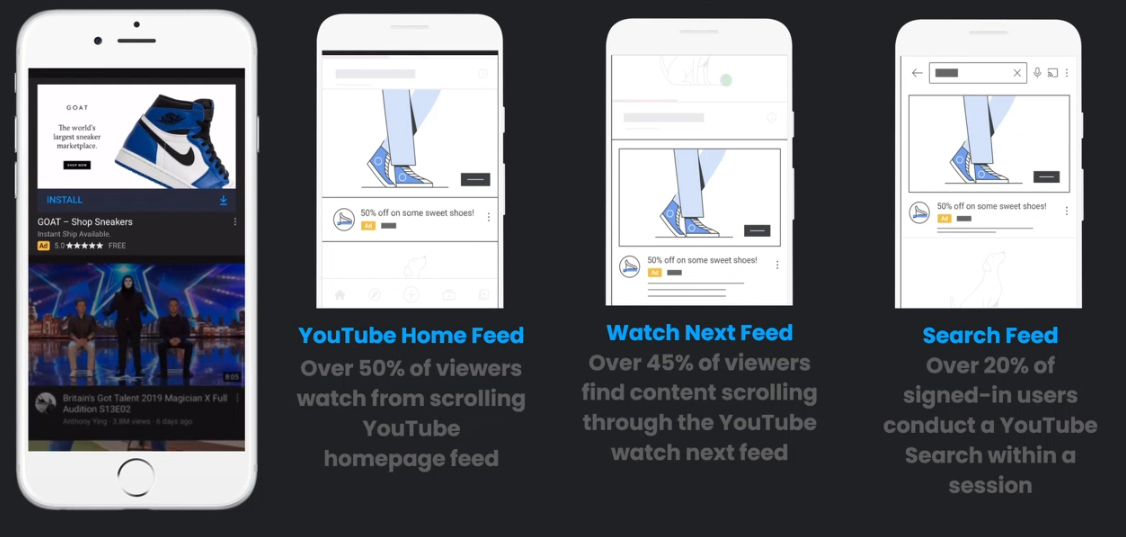
Previously, users only had the opportunity to watch videos after watching an ad (either skippable or non-skippable). So the ability to run in-feed ads in all 3 places is a complete change in how we experience ads.
For example, someone opens YouTube and starts scrolling, very similar to LinkedIn, Facebook, or Instagram. However, the difference on these social platforms is you don't know what's coming next. Is it a company post? Is it grandma's post? Is it my best friend's post? Is it an ad? But on YouTube, you know exactly what's coming next - video. This is so important that I've leveraged this in the past year to add an immense amount of value to the brands that I work with.
This works because of their user experience.
Which leads to an important piece of the puzzle:
The Purchase Cycle.
Shall we talk about the elephant in the room?
Attribution.
Meaning, if somebody watches my ad, why can't I ever see conversions inside the UI? It's a consistent question. It's because the purchase cycle is not linear and it’s not a direct purchase. There needs to be an exploration, evaluation, and experience that happens before a user takes a specific action. This means you need to know where to hook, engage, illustrate the problem, stop sporadically, and qualify the user. And all of it takes time for a user to convert!
You have the ability to inspire and introduce a user to your brand during their purchase cycle and in-feed ads are one of the best places to do that.
In-Feed = Inspire
Where? Mobile and Desktop.
Shorts
Shorts are very special for a lot of brands I work with because they all come from an Instagram and Facebook-heavy, media-buying, background.
Shorts are a very personal entertainment type of ad format. That's why it is necessary to catch attention, value their time, and then drive them to action. Ultimately you want to get people to watch your shorts as long as possible because that will show the algorithm that this is a great ad and we need to show it to more users.
One of the big values of shorts is they can be thrown across a variety of different placements, compared to in-stream and in-feed. I can take one vertical ad and run it across four different platforms (YouTube, TikTok, Instagram, and Facebook) and five different placements and be able to understand what type of creative value it adds to the user experience across all these different places. Side note, how shorts work is a cool thing we are testing inside of our agency as we are currently building dashboards to be able to showcase this type of data.
Now, what's interesting about shorts is their placement specifically on YouTube.
You can tell that YouTube is investing in it based on how high up they are above the fold when you use the app. It’s the second thing you see after the first video they show you. They're banking on that first video having an impact. YouTube is essentially saying, “Okay, now they're going to want to watch this short because they've watched this long-form piece before.” Or even, “Let me take this user on a shorts journey because maybe they don't want to watch long form.”
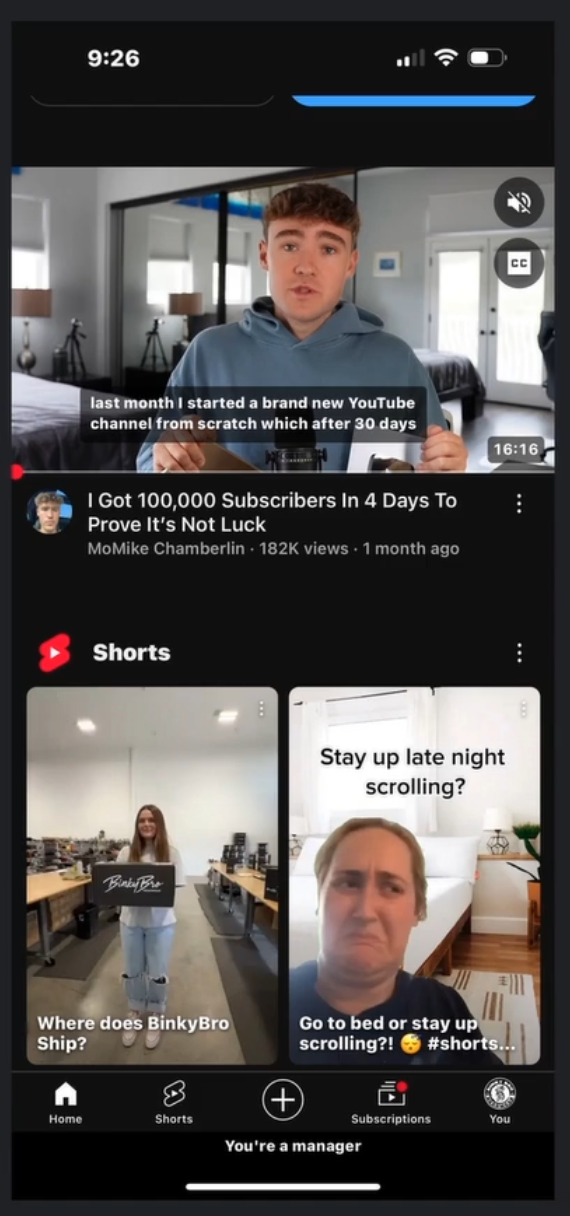
This is a very creative and humanistic type of advertising.
Shorts in comparison to regular videos have a multitude of different things. People who come and watch shorts are primarily in the “people and blog” type of content, as well as entertainment.
And that's what you should build for when it comes to shorts.
Shorts = Entertainment
Where? Mobile
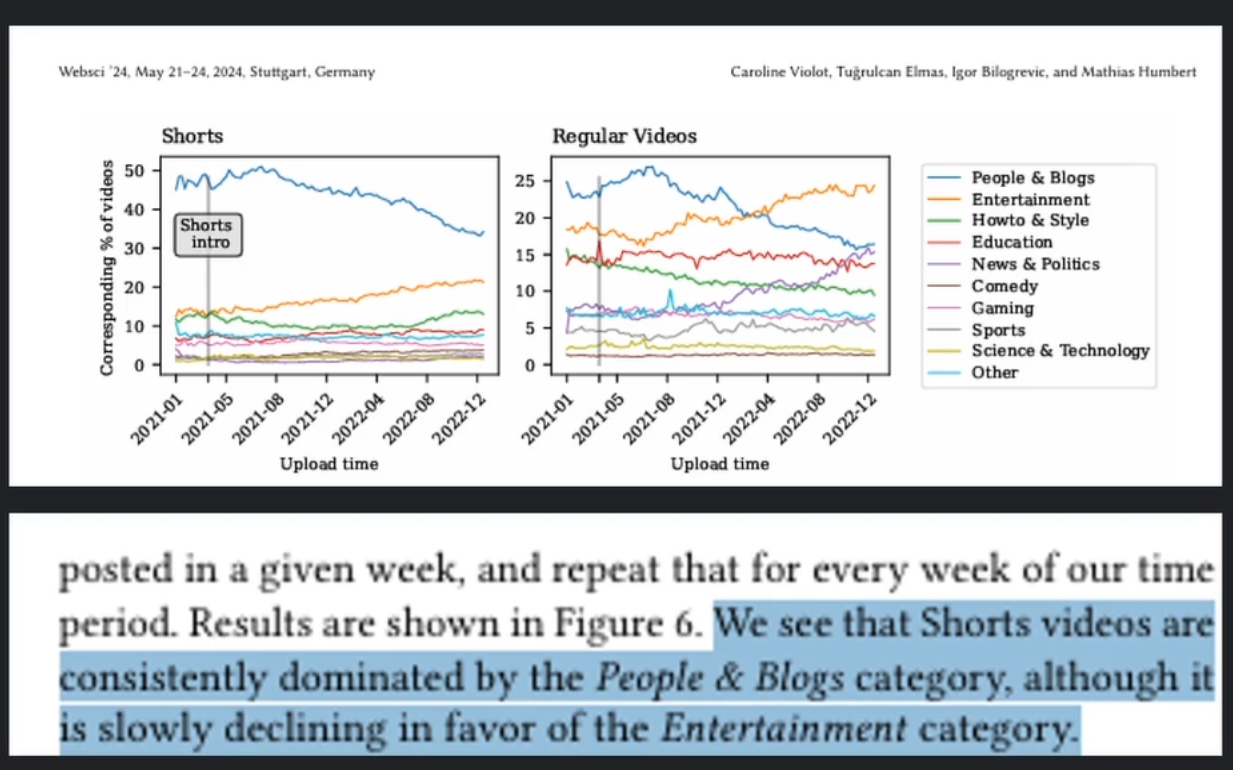
Moving Forward and Building Content
Implementation of this doesn’t need to be complicated.
Here is the simplistic version so you can get started right away:
First, decide your budget. Start with a $5, $10 or $20 budget a day over 3 different campaigns.
- Shorts (9x16) & Long Form (16x9) - In-stream (CPV)
- TV (CPM)
- In-Feed (CPM or CPV)
I'm always talking about building content for multiple variations, having different intros, and outros, voice types, etc. but now when you think of building your video, I want you to think like this:
How can our 2-3 minute video transition into an in-stream video?
And how can that in-stream video translate into an in-feed 60-second video?
Now how can we take that long-form 60-second video and cut it down to a really good short that has fast action right from the get-go?
Because in-stream is education, In-feed is inspiration and shorts are entertainment.
Simple strategies that will change the trajectory of your brand.
